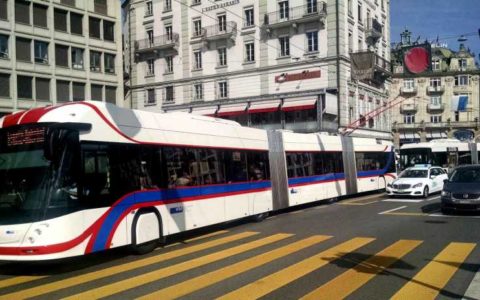Dr. Anastasios Kouvelas | Traffic Engineering and Control
RECCE – Real-time highway traffic estimation and control
This project focuses on developing integrated control solutions (i.e. co-ordinated ramp metering: RM and variable speed limits: VSL) to manage congestion on motorway networks. An efficient real-time solution of this problem requires the development of new control methodologies that are based on advanced techniques from the domains of control theory and optimization. The idea is to combine the concept of feedback linearization (due to the involved model nonlinearities) with Lyapunov stability. We design an optimal controller that utilizes both concepts, and formulate a convex optimization problem (i.e. quadratic) that can be efficiently solved online. The derived controllers are accompanied by an online estimation scheme that can feed them with appropriate inputs. Depending on the configuration of the sensors (which is site-specific), the spatial and temporal resolution as well as hardware failures and malfunctions, a traffic control room needs to make sure that it has all the necessary machinery in place, to be able to provide the state feedback to the regulators, given all the available real-time measurements. This way, the online closed-loop system becomes much more flexible, as it can be applied to sites with sparse measurements and/or frequent hardware/communications failures. The developed estimation engine makes use of machine learning, filtering theory, statistical correlations, and traffic-flow theory, and will be able to fill the gaps of missing data in the space and time domains.
In a future connected environment with Vehicle-to-X (V2X) technologies, we shall have access to traffic data of a different nature that will have inherent differences compared to the conventional loop-detector data we are using today. It has to be noted that this scenario is not futuristic but rather quite realistic, as such technologies are already on our roads (e.g. Tesla), and are going to increase incrementally in the next few years. Pilots with autonomous vehicles (AV) are currently taking place in many places around the world and traffic operators are going to DaCe mixed traffic (i.e. AV and human-driven vehicles) rather soon. The rich data sets that V2X and AV provide, need to be integrated with our current data to produce traffic estimates of high accuracy. To this end, the classical models of traffic-flow theory that have been used for the last 60 years need to be revisited and modified in order to accompany the technological advancements of the automobile industry.
The VSL infrastructure has only recently been installed (and continues to be installed) on highways around Zurich. Traffic operators recognize today that VSL can improve safety, reduce fuel emissions, and also reduce delays during the peak hours in which traffic jams occur. The current practice is to use predetermined thresholds for congestion levels and speed limits and create look-up tables for different conditions (e.g. when congestion forms, the speed limits go down from 120 km/h to 100 km/h and then 80 km/h). By making this process dynamic and automatic, we can improve its efficiency and enhance the digitalization of traffic infrastructure. The control approach that we propose is novel and expected to have a scientific impact. We aim at implementing the algorithms developed during this project at a Traffic Control Center and regulating the traffic along a stretch of a Swiss highway.





